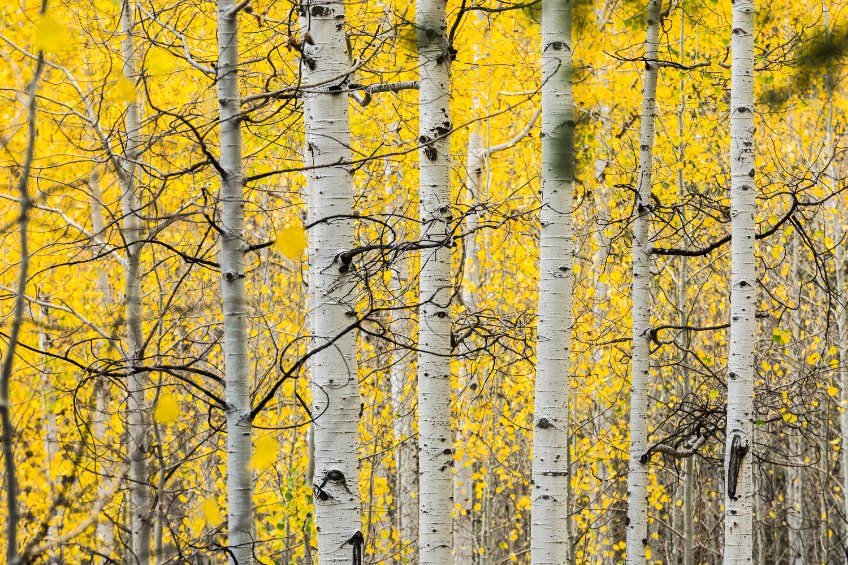Balsam Poplar (Populus balsamifera)
Black Cottonwood (Populus trichocarpa)
Quaking Aspen (Populus tremuloides)
Description
Black Cottonwood and Balsam Poplar
It is difficult to distinguish between black cottonwood and balsam poplar. The two species have similar appearances and habitats. However, the two have different ranges, overlapping only in the Cook Inlet area where hybrids may occur. Both species are prolific seeders, with high germination potential. However, the germinative capacity of both is short lived and the seeds require moist sites with bare mineral soil to become established. Black cottonwood and balsam poplar will also regenerate from stump sprouts and from cuttings. The two species are very intolerant of shade and will not reproduce under the canopy of an existing stand.
The two poplars are medium lived trees, maturing in 75 to 150 years. Growth is rapid for the first 40 to 50 years and may continue well past the age of maturity. However, heart rot occurs in most stands nearing maturity, especially those of black cottonwood.
Aspen
Aspen is a short lived tree, maturing in 60 to 80 years. Growth is rapid with trees attaining maximum diameters of 16 to 18 inches (40.6 to 45.7 centimeters) and maximum heights of 70 to 80 feet (21.3 to 24.4 meters). The average stand diameters are likely to be nearer to 6 to 8 inches (15.2 to 20.3 centimeters). Like the two poplars, aspen is a prolific seeder with a high viability. Aspen also needs bare mineral soil to become established and will regenerate from stump sprouts and cuttings. This species is very intolerant of shading and will eventually be replaced by the taller, more tolerant species such as white spruce.

Wood Properties
Although the wood of all three species has a characteristic odor when green, it has no odor or taste when seasoned. The woods are diffuse-porous (growth rings not very distinct), with fine, even texture.
The wood of all three species is light in weight when seasoned, moderately weak in bending and compression strength, low in shock resistance, and soft but tough when properly seasoned. The poplars have a low shrinkage rate when seasoned, while aspen has a moderately high shrinkage rate. All three species are easy to glue, take finishes and stains well but have a low nail-holding capacity and are low in decay resistance. The wood works easily and the straight, uniform grain is most satisfactory for uses such as veneers and plywoods.
SOURCE: https://bit.ly/3JDPSIL
Introduction
The boreal forests (taiga) of Alaska occur from the Kenai Peninsula to the southern slopes of the Brooks Range and from the Canadian border to the Bering Sea. White spruce (Picea glauca), paper birch (Betula papyrifera) and aspen (Populus tremuloides) are the main species on the warmer, well-drained sites. Mixtures of balsam poplar (Populus balsamifera), black cottonwood (Populus trichocarpa), white spruce, black spruce (Picea mariana) and eastern larch (Larix laricina) develop on the bottomlands and flood plains of the many rivers. Various willows and small elders also grow throughout the forest.
Approximately 105.8 million acres (42.8 million hectares) of Alaska are classified as boreal forest. Of this, 22.5 million acres (9.1 hectares) are presently considered commercial forest (capable of producing 20 cubic feet or more of wood per acre, per year). The total net sawtimber volume of all species in interior Alaska is estimated at 31 billion board feet (5.4 billion cubic feet), with the two poplars accounting for 9% and quaking aspen 2% of this volume.

Bottomland Spruce-Hardwood Association
The bottomland spruce-hardwood forest types, consisting of variable width strips along the major rivers, account for approximately 17% (18 million acres or 7.3 million hectares) of the boreal forest. These are the most productive sites of that vast forest area. The high productivity of these sites is due in part to the frequent flooding of the rivers, which adds nutrients to the soil and removes the accumulated litter layer. Very little permafrost exists in the riverbottom soils which are well-drained and support vigorous vegetation. However, productivity of the bottomland spruce-hardwood forest sites does vary considerably throughout the boreal forest area. The most productive commercial forest sites area are those adjacent to the Porcupine River northeast of Fort Yukon.
Balsam poplar is an important tree species of this association, reaching its greatest size and abundance on the flood plains of the rivers. It invades sandbars and grows rapidly to heights of 80 to 100 feet (24 to 30 m.) and diameters of 24 inches (60 cm.). It is eventually replaced by white spruce on most sites. Black cottonwood may grow in place of balsam poplar in this association in the Susitna Valley. Hybrids of the two may also occur there.
Upland Spruce-Hardwood Forest Types
The upland spruce-hardwood forest types account for approximately 61% of the boreal forest (64.4 million acres or 26 million hectares). These types occupy sites to 1,000 feet (304.9 meters) in elevation along the Lower Yukon River and up to 3,500 feet (1,067.2 meters) near the Alaska-Yukon Territory border.
The average productivity of upland forests is less than that of the bottomiand forest sites. Factors which contribute to this lower productivity include lower soil nutrient levels, cooler temperatures, and lower precipitation.
Aspen stands develop on south facing slopes of upland areas following fires and a willow stage. The aspen stands mature in 60 to 80 years and are eventually replaced by white spruce except on those sites which are excessively dry. There, aspen may persist. Aspen and balsam poplar may invade most other sites following fire or other catastrophes. Both species will occur as pure or mixed stands with the poplar favored on the wetter sites and aspen favored on the dryer sites. White spruce will eventually replace both species on most sites.
